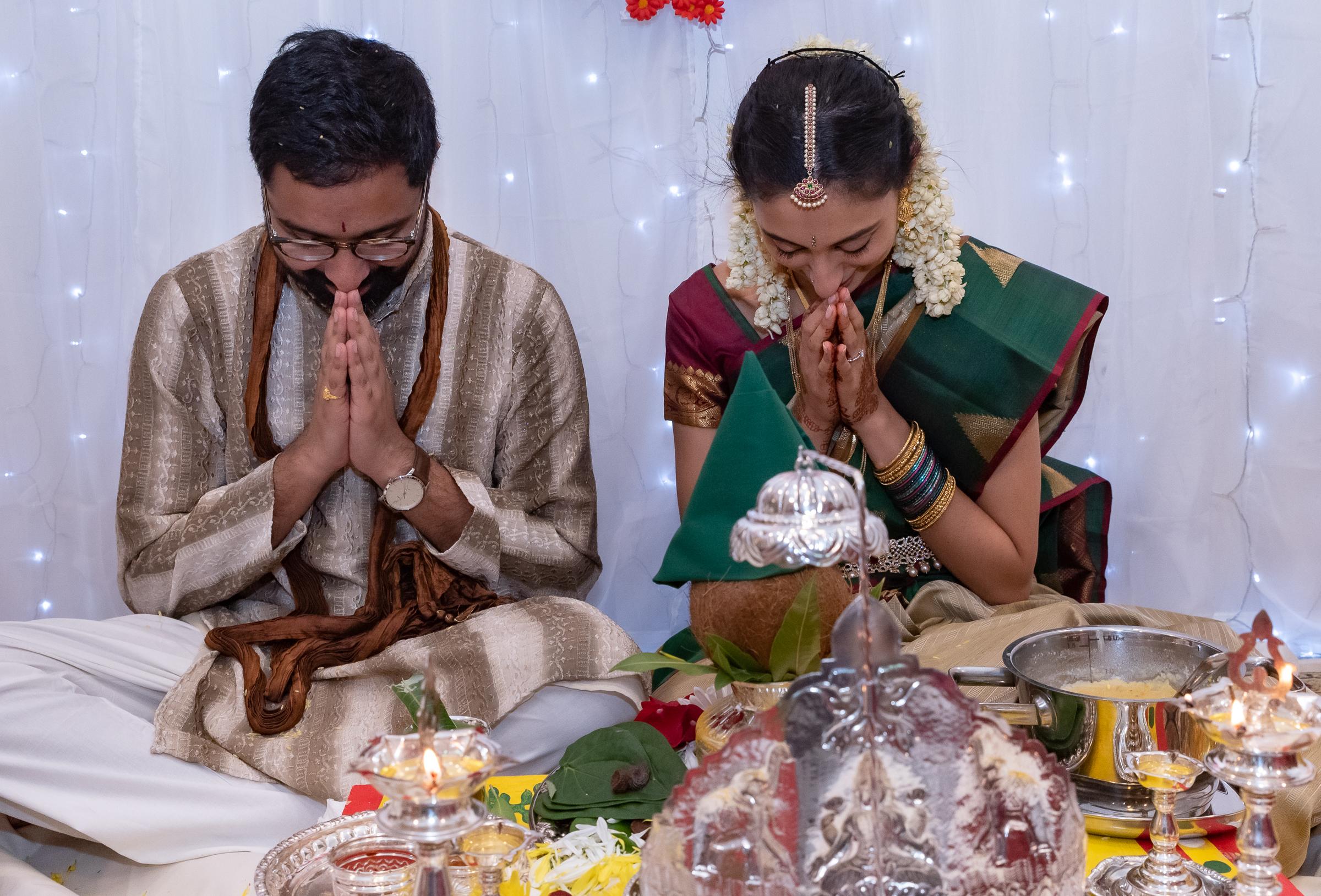The One Where They're Finally Getting Married
Easy Guide to a Telugu Wedding

Question
Snatakam
Answer
In the olden days, Brahmin boys were made to wear sacred threads, and were sent away from home to the sages to learn the Vedas, or religious texts. When they returned, they had to perform the Snatakam, signifying they had completed their education and were ready to take on other responsibilities. Once a boy had completed his basic education, he was given the choice to either pursue marriage or go to Kasi and study further to become a sanyasi. In this pre-wedding ceremony, the groom pretends to go to Kasi and says he has discarded all his worldly pleasures such as marriage, relations, and properties, and that he is no longer concerned with leading a family life. The bride's brother then stops him and coaxes him to assume the responsibility of a household and marry his sister. They tease each other a bit, the bride's brother bribes him with sweets, and eventually the groom readily agrees to get married. This day in age, the Snatakam signifies that the groom is ready for marriage.
Question
Gauri Puja
Answer
The bride worships the Goddess Gauri by performing the Gauri Puja. The Goddess Gauri is highly revered as it is beleived that she is a manifestation of Shakti, the mother of the universe and the power and energy by which God creates, preserves, and destroys the world. She symbolizes motherhood, family, and the victory of good over evil.
Question
Baraat
Answer
This is the groom's grand entrance to the wedding venue, where he is accompanied by family and friends as the bride's family waits to welcome them to the wedding. There is a lot of music, singing, and dancing as the groom is paraded to the venue.
Question
Ganapathi Puja
Answer
During a marriage, Ganapathi, the Hindu God who removes obstacles is invoked to keep away all imperilments for such an auspicious function.
Question
Punyaha Vachanam
Answer
Prayers are recited to sanctify the water used during the ceremony. Holy water is sprinkled to purify the location. The groom receives a sacred thread signifying the beginning of family life.
Question
Raksha Bandhanam
Answer
A thread is tied to the groom's right wrist to protect him from any evil influences during the ceremony.
Question
Kanya Agamanam
Answer
This is the traditional entrance of the bride. Here, the bride is carried to the mandapam, or marriage stage, by her maternal uncles while sitting in a basket. Before the couple sees each other, a partition is held in front of the groom and the priest gives information to the bride. When the groom acknowledges this information, he accepts her and the partition is removed. The bride and groom then sit next to each other in front of a sacrificial fire. The bride's parents are seated to her right while the priest is seated opposite of them and to the left of the groom. A fire, or Agni, is in the center. The bride and groom are purified before the wedding.
Question
Vara Puja & Kanya Daanam
Answer
The bride's father washes the feet of the groom with holy water, and wipes them with silk. The bride's father then officially gives his daughter's hand in marriage. Water is sprinkled on the couple in order to guard them against any bad omens. Vedic mantras are chanted giving thanks to the celestial caretakers of the bride's childhood. Having attained nobility, the girl is now free to be given in marriage to the groom.
Question
Muhurtham
Answer
The auspicious moment for marriage is pre-chose and known as the Subhamuhurtham. At this appinted time, amidst mantras from Vedas being recited by the priests, the bride and groom apply jeelakarra bellam (a paste made from cumin seeds and raw brown sugar) on each other's heads at exactly the same moment. The bitter taste of cumin and the sweetness of sugar cannot be separated, symbolizing that the bride and groom are supposed to become inseparable through life's bitter and sweet times. It is also said when the couple touches each others' heads, there is a complete interchange of each other's thoughts and destinies, thus making their lives completely intertwined.
Question
Mangalya Puja
Answer
A prayer is made to Goddess Lakshmi, the goddess of prosperity. It is conducted to remove obstacles for marriage, to have good matrimonial alliance, to have happy and prolonged marital bliss, and also to have good progeny. The priest blesses the mangalasutra (gold pendants of goodwill tied by a tumeric thread). The mantras chanted at this time say "Let this gold multiply your wealth. Let this water purify your married life, and may your prosperity increase."
Question
Mangalya Dhaaranam and Brahmamudi
Answer
The bride, looking eastward, and the groom facing westward, ties the gold mangalasutra around the neck of the bride. The groom ties three nots, while reciting mantras saying " Praying the Almighty that I be blessed with a long life, I tie this knot around your neck, oh soubhagyavati, may providence bestow on you a fulfilling life of a married woman for a hundred years." This is one of the ceremonies as God graces newlyweds to live a blissful life on earth as wife and husband.
Question
Talambralu
Answer
The bride and groom shower one another with talambralu (rice mixed with saffron and tumeric). This denotes the couple's desire for happiness, enjoyment, and contentment. Initially they take turns to shower the rice; however as it progresses, it gets more entertaining when they begin to compete with each other.